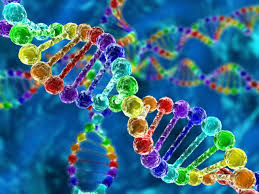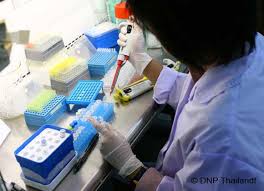 Forensic Science
Computer Forensics
History of Forensic Science
Forensic Science
Computer Forensics
History of Forensic Science
FORENSIC SCIENCES
Forensic science is the application of science to criminal and civil laws, mainly on the criminal side during criminal investigation, as governed by the legal standards of admissible evidence and criminal procedure. Forensic scientists collect, preserve, and analyze scientific evidence during the course of an investigation. While some forensic scientists travel to the scene of the crime to collect the evidence themselves, others occupy a laboratory role, performing analysis on objects brought to them by other individuals.
 Forensic science is therefore further organized into the following fields:
Trace Evidence Analysis,
Forensic Toxicology,
Forensic Psychology,
Forensic Podiatry,
Forensic Pathology,
Forensic Optometry,
Forensic Ontology,
Forensic Linguistics,
Forensic Geology,
Forensic Entomology,
Forensic Engineering,
Forensic DNA Analysis,
Forensic Botany,
Forensic Archeology,
Forensic Anthropology,
Digital Forensics and
Criminalistics
Forensic science is therefore further organized into the following fields:
Trace Evidence Analysis,
Forensic Toxicology,
Forensic Psychology,
Forensic Podiatry,
Forensic Pathology,
Forensic Optometry,
Forensic Ontology,
Forensic Linguistics,
Forensic Geology,
Forensic Entomology,
Forensic Engineering,
Forensic DNA Analysis,
Forensic Botany,
Forensic Archeology,
Forensic Anthropology,
Digital Forensics and
Criminalistics
DNA
Deoxyribonucleic acid, more commonly known as DNA, is a complex molecule that contains all of the information necessary to build and maintain an organism. All living things have DNA within their cells. In fact, nearly every cell in a multicellular organism possesses the full set of DNA required for that organism.However, DNA does more than specify the structure and function of living things — it also serves as the primary unit of heredity in organisms of all types. In other words, whenever organisms reproduce, a portion of their DNA is passed along to their offspring. This transmission of all or part of an organism's DNA helps ensure a certain level of continuity from one generation to the next, while still allowing for slight changes that contribute to the diversity of life.

Forensics & DNA:
DNA profiling and matching of physical data, such as fingerprints, are used in solving all crime types ranging from housebreaking and car crime to assaults, murder and rape. The forensic scientists will look for suitable samples at a crime scene, examining such items as weapons, clothing, hair or anything else from which they can obtain body cells for DNA profiling, or fingerprints or "marks" for use in fingerprint matching. DNA has been notably important to the field of forensic science. The discovery of DNA has meant that the guilt or innocence of a person who is investigated for a crime can be determined. It also means that scarce evidence can still yield vital clues regarding the perpetrator of a crime. Also important is that the identification of victims can occur, particularly in cases where the victim's condition is unrecognizable to family or friends. In this sense, DNA has been important in revolutionizing the entire field of forensic science. This impact is felt within the criminal justice system and contributes to the accurate safeguarding of society.
RNA

Ribonucleic acid (RNA) is a polymeric molecule essential in various biological roles in coding, decoding, regulation, and expression of genes. RNA and DNA are nucleic acids, and, along with lipids, proteins and carbohydrates, constitute the four major macromolecules essential for all known forms of life. Like DNA, RNA is assembled as a chain of nucleotides, but unlike DNA it is more often found in nature as a single-strand folded onto itself, rather than a paired double-strand. Cellular organisms use messenger RNA (mRNA) to convey genetic information (using the letters G, U, A, and C to denote the nitrogenous bases guanine, uracil, adenine, and cytosine) that directs synthesis of specific proteins. Many viruses encode their genetic information using an RNA genome. Some RNA molecules play an active role within cells by catalyzing biological reactions, controlling gene expression, or sensing and communicating responses to cellular signals. One of these active processes is protein synthesis, a universal function where RNA molecules direct the assembly of proteins on ribosomes. This process uses transfer RNA (tRNA) molecules to deliver amino acids to the ribosome, where ribosomal RNA (rRNA) then links amino acids together to form proteins.
Forensic & RNA
RNA analysis offers insight into diseases and mechanisms leading to death and could develop into a valuable tool for diagnosis of the cause of death in forensic pathology. Other possible applications include the determination of the age of wounds and injuries and of the post-mortem interval. The molecular identification of body fluids by analysis of cell-specific mRNA expression already represents a new technique supplementing DNA analysis in forensic cases. This review explains and discusses principles, techniques and applications by offering a complete and comprehensive overview of research results in forensic RNA work.Degrading of mRNA is used to estimate the Post Mortem Interval(PMI).So RNA play important role in Forensic Pathology.
 Forensic science is therefore further organized into the following fields:
Trace Evidence Analysis,
Forensic Toxicology,
Forensic Psychology,
Forensic Podiatry,
Forensic Pathology,
Forensic Optometry,
Forensic Ontology,
Forensic Linguistics,
Forensic Geology,
Forensic Entomology,
Forensic Engineering,
Forensic DNA Analysis,
Forensic Botany,
Forensic Archeology,
Forensic Anthropology,
Digital Forensics and
Criminalistics
Forensic science is therefore further organized into the following fields:
Trace Evidence Analysis,
Forensic Toxicology,
Forensic Psychology,
Forensic Podiatry,
Forensic Pathology,
Forensic Optometry,
Forensic Ontology,
Forensic Linguistics,
Forensic Geology,
Forensic Entomology,
Forensic Engineering,
Forensic DNA Analysis,
Forensic Botany,
Forensic Archeology,
Forensic Anthropology,
Digital Forensics and
Criminalistics Forensic Science
Computer Forensics
History of Forensic Science
Forensic Science
Computer Forensics
History of Forensic Science

